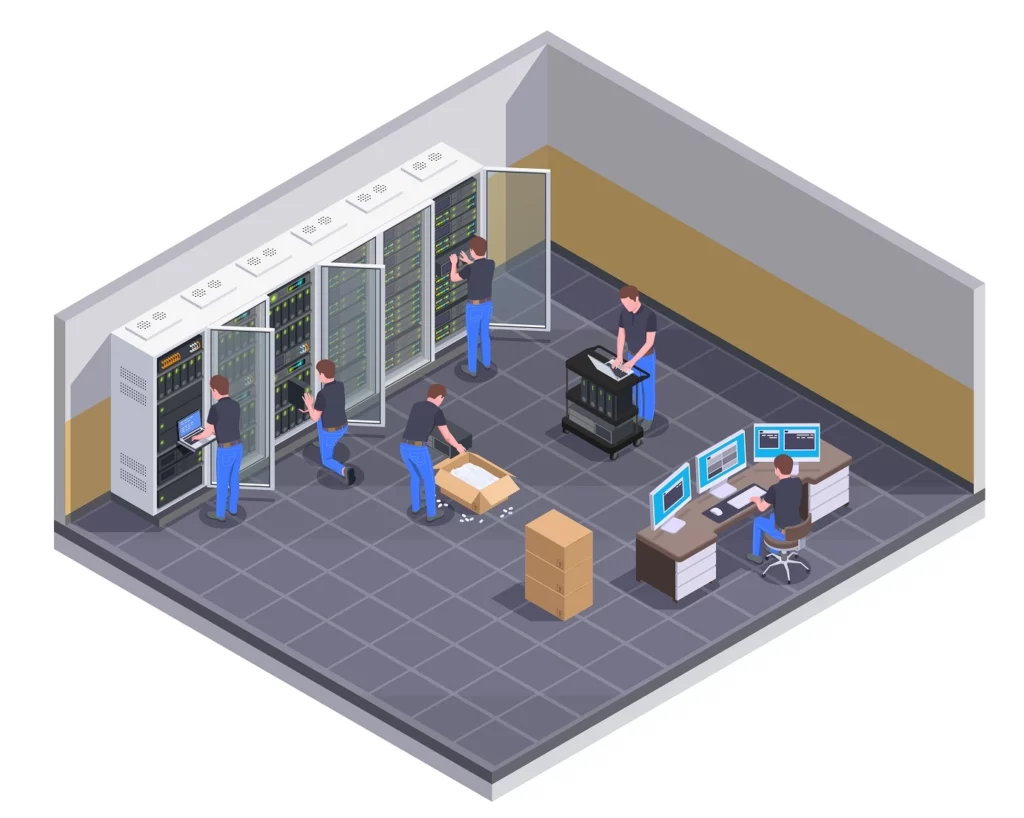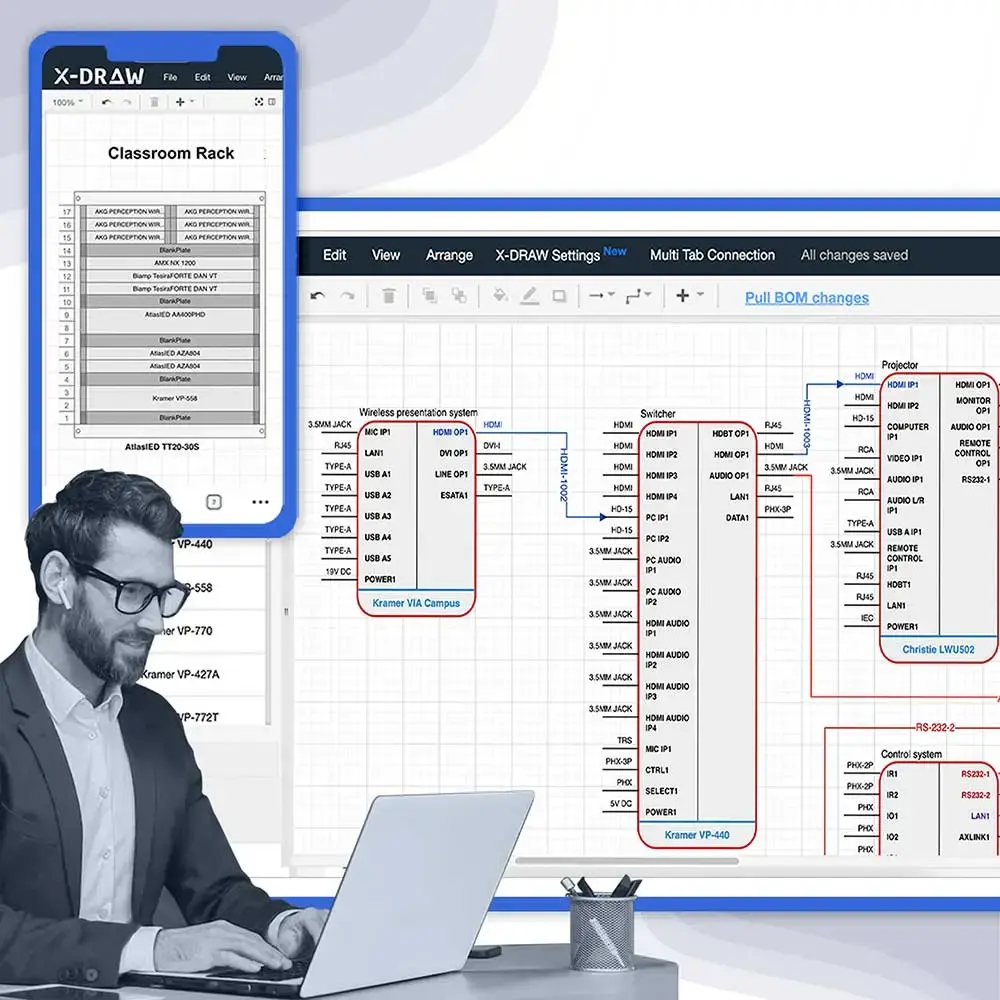Strategic AV Rack Room Planning Guide
The success of any AV business relies on its ability to deliver notch audiovisual experiences. One important but often overlooked factor in achieving this is the design and organization of the rack room. This central hub houses the equipment that powers presentations, events, and installations. Planning a designed audio-visual rack room is vital to ensuring performance and dependability.
In this guide, we will explore the principles and considerations for creating a planned rack room. From arranging equipment to managing cables we will provide insights to improve the efficiency and functionality of your AV business. By implementing these strategies, you can boost Audio Visual System Integration, minimize downtime and ultimately provide experiences for your clients.
Best Practices for Organized AV Rack Room
Organized AV rack rooms are crucial for maintaining and managing audio-visual equipment efficiently. Here are some best practices to consider:
Labeling And Documentation
Proper cable labeling and documentation play a role in maintaining an organized rack room, for any company. Having labels on all cables whether they are power cords or signal cables helps in troubleshooting. Makes maintenance procedures seamless. Think of documentation as a treasure map that guides you to the core of your AV system providing information to identify and resolve any issues.
By ensuring labeling and documentation technicians have the knowledge and resources to quickly and accurately address challenges ultimately saving time and avoiding unnecessary frustrations. These small but important details make the difference between a setup and an organized rack room enabling your AV business to operate at its full potential. Comprehensive labeling and documentation act as an approach to empowering technicians, with the tools they need to handle challenges and save valuable time.
Cable Management For Audio Visual Rack Room
Managing cables in a rack room is extremely important to maintain an organized space that looks good and functions optimally. It has an impact on the airflow and accessibility, preventing any overheating problems and making it easier to reach individual components. To achieve this it’s essential to use cable ties, raceways, and other tools specifically designed for cable management solutions to keep the cables bundled and routed.
One game-changing technique is color coding and labeling cables at both ends. This allows technicians to quickly identify and trace cables, which greatly simplifies the installation, maintenance, and troubleshooting processes. Although it may require some time and effort investment, the long-term benefits of this approach are worth it as it results in an efficient, reliable, and easily accessible AV system. In addition, to enhance aesthetics proper cable management contributes significantly towards achieving these outcomes.
Ventilation And Cooling
AV equipment, especially when housed in rack rooms, has the potential to generate an amount of heat. It is crucial to prioritize ventilation and cooling methods in order to maintain performance. Allowing space between components allows for airflow while the use of rack-mounted fans or ventilation panels can help expel hot air and introduce cooler ambient air. Constantly monitoring temperature levels is vital to prevent overheating which can result in performance issues and permanent damage to equipment.
By implementing temperature monitoring systems and alert mechanisms you can ensure awareness of the operating environment for your AV gear. A cooled system guarantees flawless performances, and reliable operations. Extends the lifespan of your valuable AV equipment. Therefore, it is essential to invest in cooling measures as it not only ensures top-notch performance but also contributes to the longevity and dependability of your AV setup.
AV Rack Room Security
Your rack room plays a role in storing essential AV equipment so it’s vital to prioritize its security. Implementing a security system is key which includes access control policies, secure locks, and well-defined protocols for accessing the AV room. Having CCTV surveillance constantly monitoring the area can act as a guardian for both the room and its contents. The recorded footage from these cameras can be highly valuable, for investigating any security breaches and identifying those.
Keeping an inventory of all audio visual equipment, including their numbers, serves as an insurance policy that facilitates smoother insurance claims and recovery efforts in case of theft, damage, or loss. By taking this step you can have peace of mind knowing that your assets are protected in unforeseen circumstances. Treating your rack room as a high-security area is not just a measure but a necessity to enhance the security of your investment and safeguard the core operations of your AV setup.
Remote Monitoring and Management
Remote monitoring and management tools have brought a shift, to the world of AV businesses. These remarkable tools offer real-time visibility into the status of equipment allowing users to effortlessly ensure operations and promptly address any anomalies that may arise. This proactive approach enables issue resolution minimizing downtime and preventing more significant problems from occurring.
Moreover, advanced systems go beyond monitoring. Provide remote maintenance capabilities. This means users can remotely reboot devices or make adjustments to settings ensuring operation even from a distance. The availability of these monitoring and management tools empowers users with control and oversight revolutionizing how AV infrastructures are managed. It greatly enhances efficiency, responsiveness, and overall reliability, in running AV businesses. This technological breakthrough truly transforms the way AV businesses operate by guaranteeing the efficient functioning of their infrastructure.
Accessibility And Clear Pathways
Having pathways and easy access to equipment is extremely important for AV professionals as it can make their work more comfortable and efficient. When designing the layout of your rack room think of it as creating a workspace that technicians can easily navigate ensuring there’s space for them to move comfortably and access components without any trouble. Avoid overcrowding the area as it can result in an impractical environment. Make sure there’s room between racks and components, for maintenance.
Forward-thinking rack room planning should also consider expansions by allowing for equipment or upgrades. This proactive approach saves time and effort in the run since technicians won’t have to make changes or relocate things to accommodate new additions. By prioritizing pathways, easy access, and thoughtful rack room layout design you’re investing in the well-being and efficiency of your technicians benefiting both you and your team. Taking this impactful step will create a workspace that promotes smooth operations while fostering a safe and productive work environment.
Rack Room Layout and Organization
The arrangement of your rack room plays a role in how your AV system functions and operates efficiently. It’s similar to designing a blueprint for a structured building ensuring operations and easy maintenance. To ensure stability it’s best to place equipment at the bottom of the rack like building a strong foundation for a tall structure. It’s also helpful to group related components to organize tools in a toolbox, which makes troubleshooting more efficient.
To future-proof your rack room make sure you leave space for equipment or upgrades. This will save you time and effort in the run. Incorporating shelving allows you to accommodate components of different sizes and create an overall configuration that is harmonious and seamless. Think of your rack room layout as orchestrating a symphony, where each piece contributes to the harmony and functionality of the system. By following these principles you’ll create an environment where every component works together effectively ensuring performance and longevity, for your AV system.
Are you struggling to design rack layouts manually? Well, here’s XTEN-AV’s free rack layout design tool. You can also book a demo session with us to understand our platform better.
AV Design Mastery + Winning Proposals = 10x Productivity!
- Automatic Cable Labeling & Styling
- 100+ Free Proposal Templates
- Upload & Create Floor Plans
- 1.5M Products from 5200 Brands
- AI-powered ‘Search Sense'
- Legally Binding Digital Signatures
Conclusion
The importance of a designed rack room cannot be overstated in the world of AV businesses. It serves as the foundation, for operations and exceptional performances. By following practices in arranging equipment ensuring ventilation and managing cables effectively you can maximize the reliability and lifespan of your AV systems.
A planned rack room empowers your business to consistently deliver audiovisual experiences setting you apart in a competitive market. Embrace these principles. Witness your AV business flourish, on a foundation of excellence.
Frequently Asked Questions (FAQ's)
An AV rack room serves as a hub, for organizing and housing equipment ensuring smooth operation, easy maintenance, and optimal performance of AV systems.
There are advantages to using AV racks. They streamline organization, make maintenance more accessible, improve airflow for equipment cooling and allow for expansions or upgrades.
To effectively organize an AV rack, begin by labeling and documenting all the components. Use cable management tools to ensure efficient cable routing. Prioritize ventilation. Cooling to optimize equipment performance. Also, implement security measures to safeguard AV gear.
To determine the number of rack spaces needed in AV Room for a component simply look at the number of units (U) it occupies within the rack. One rack space is equivalent to 1.75 inches in height. Count the number of U spaces that the component occupies from top to bottom within the rack.


